The OCZ Vector 180 (240GB, 480GB & 960GB) SSD Review
by Kristian Vättö on March 24, 2015 2:00 PM EST- Posted in
- Storage
- SSDs
- OCZ
- Barefoot 3
- Vector 180
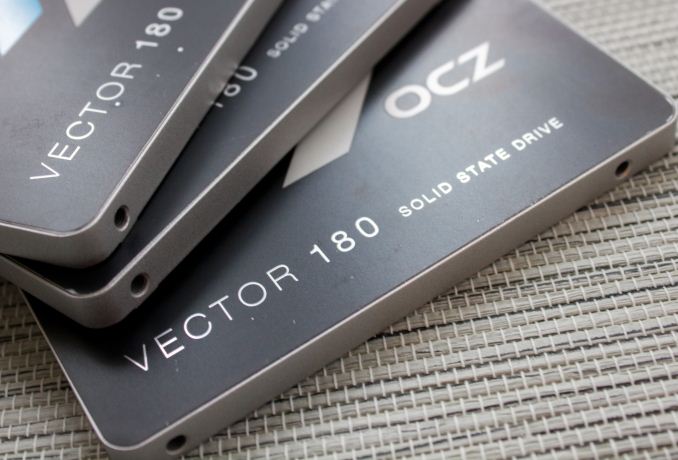
OCZ has been teasing the Vector 180 for quite some time now. The first hint of the drive was unveiled over nine months ago at Computex 2014 where OCZ displayed a Vector SSD with power loss protection, but the concept of 'full power loss protection for the enterprise segment' as it existed back then never made it to the market. Instead, OCZ decided to partially use the concept and apply it to its new flagship client drive that is also known as the Vector 180.
OCZ calls the power loss protection feature in Vector 180 'Power Failure Management Plus', or PFM+ for short. For cost reasons, OCZ didn't go with full power loss protection similar to enterprise SSDs and hence PFM+ is limited to offering protection for data-at-rest. In other words, PFM+ will protect data that has already been written to the NAND, but any and all user data that still sits in the DRAM buffer waiting to be written will be lost in case of a sudden power loss.
The purpose of PFM+ is to protect the mapping table and reduce the risk of bricking due to a sudden power loss. Since the mapping table is stored in the DRAM for faster access, all SSDs without some sort of power loss protection are inherently vulnerable to mapping table corruption in case of a sudden power loss. In its other SSDs OCZ tries to protect the mapping table by frequently flushing the table from DRAM to NAND, but with higher capacities (like the 960GB) there's more metadata involved and thus more data at risk, which is why OCZ is introducing PFM+ to the Vector 180.
That said, while drive bricking due to mapping table corruption has always been a concern, I don't think it has been significant enough to warrant physical power loss protection for all client SSDs. It makes sense for the Vector 180 given it's high-end focus as professional users are less tolerant to downtime and it also grants OCZ some differentiation in the highly competitive client market.
Aside from PFM+, the other new thing OCZ is bringing to the market with the Vector 180 is a 960GB model. The higher capacity is enabled by the use of 128Gbit NAND, whereas in the past OCZ has only used a 64Gbit die in its products. It seems that Toshiba's switch to 128Gbit die has been rather slow as I have not seen too many products with 128Gbit Toshiba NAND - perhaps there have been some yield issues or maybe Toshiba's partners are just more willing to use the 64Gbit die for performance reasons (you always lose some performance with a higher capacity die due to reduced parallelism).
| OCZ Vector 180 Specifications | ||||||
| Capacity | 120GB | 240GB | 480GB | 960GB | ||
| Controller | OCZ Barefoot 3 M00 | |||||
| NAND | Toshiba A19nm MLC | |||||
| NAND Density | 64Gbit per Die | 128Gbit per Die | ||||
| DRAM Cache | 512MB | 1GB | ||||
| Sequential Read | 550MB/s | 550MB/s | 550MB/s | 550MB/s | ||
| Sequential Write | 450MB/s | 530MB/s | 530MB/s | 530MB/s | ||
| 4KB Random Read | 85K IOPS | 95K IOPS | 100K IOPS | 100K IOPS | ||
| 4KB Random Write | 90K IOPS | 90K IOPS | 95K IOPS | 95K IOPS | ||
| Steady-State 4KB Random Write | 12K IOPS | 20K IOPS | 23K IOPS | 20K IOPS | ||
| Idle Power | 0.85W | |||||
| Max Power | 3.7W | |||||
| Encryption | AES-256 | |||||
| Endurance | 50GB/day for 5 years | |||||
| Warranty | Five years | |||||
| MSRP | $90 | $150 | $275 | $500 | ||
The retail package includes a 3.5" desktop adapter and a license for Acronis True Image HD 2013 cloning software. Like some of OCZ's recent SSDs, the Vector 180 includes a 5-year ShieldPlus Warranty.
OCZ has two flavors of the Barefoot 3 controller and obviously the Vector 180 is using the faster M00 bin, which runs at 397MHz (whereas the M10 as used in the ARC 100 and Vertex 460(a) is clocked at 352MHz).
OCZ's other SSDs have already made the switch to Toshiba's latest A19nm MLC and with the Vector 180 the Vector series is the last one to make that jump. Given that the Vector lineup is OCZ's SATA 6Gbps flagship, it makes sense since NAND endurance and performance tend to increase as the process matures.
The Vector 180 review is the second that is based on our new 2015 SSD Suite and I suggest that you read the introduction article (i.e. the Samsung SM951 review) to get the full details. Due to several NDAs and travel, I unfortunately don't have too many drives as comparison points yet, but I'm running tests non-stop to add more drives for more accurate conclusions.
| AnandTech 2015 SSD Test System | |
| CPU | Intel Core i7-4770K running at 3.5GHz (Turbo & EIST enabled, C-states disabled) |
| Motherboard | ASUS Z97 Deluxe (BIOS 2205) |
| Chipset | Intel Z97 |
| Chipset Drivers | Intel 10.0.24+ Intel RST 13.2.4.1000 |
| Memory | Corsair Vengeance DDR3-1866 2x8GB (9-10-9-27 2T) |
| Graphics | Intel HD Graphics 4600 |
| Graphics Drivers | 15.33.8.64.3345 |
| Desktop Resolution | 1920 x 1080 |
| OS | Windows 8.1 x64 |
- Thanks to Intel for the Core i7-4770K CPU
- Thanks to ASUS for the Z97 Deluxe motherboard
- Thanks to Corsair for the Vengeance 16GB DDR3-1866 DRAM kit, RM750 power supply, Hydro H60 CPU cooler and Carbide 330R case


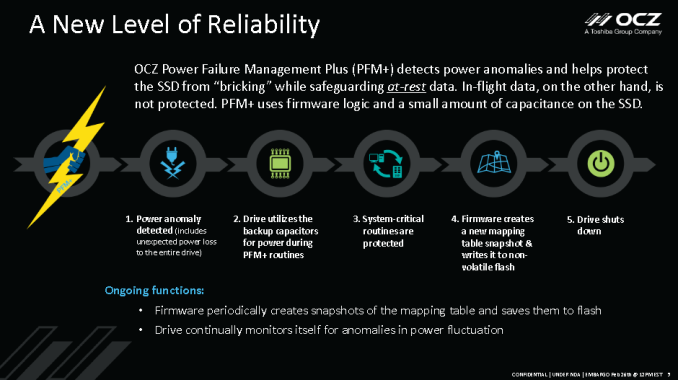
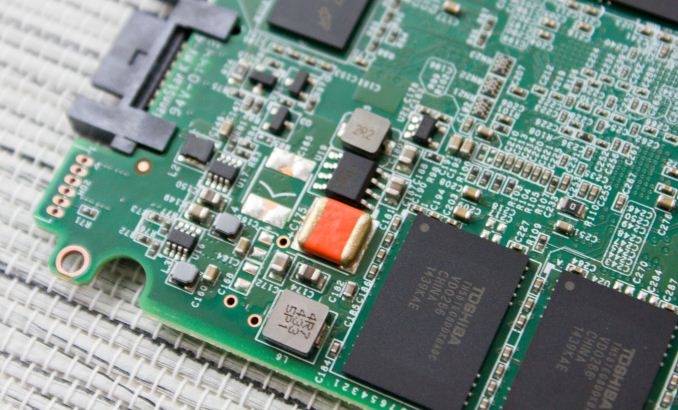
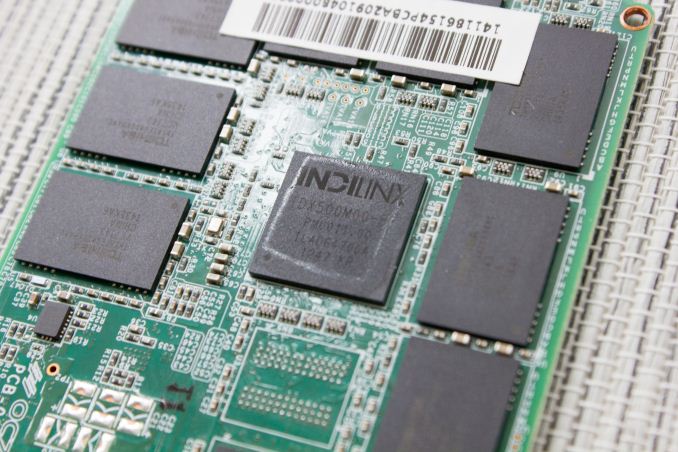
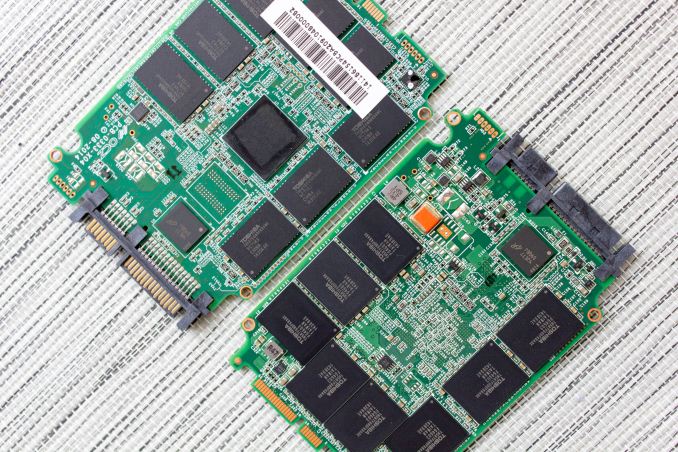








89 Comments
View All Comments
zodiacsoulmate - Tuesday, March 24, 2015 - link
PFM is so much needed for ocz drives... almost all my dead vector drives are because of sudden power loss...ocztosh - Tuesday, March 24, 2015 - link
As this is my first post on this article please allow me to identify myself as an OCZ representative.Hi Zodiacsoulmate thank you for your comment. We do feel like PFM+ helps add more protection for power users and ultimately it was our goal with this drive to create a product that delivered both high performance and enhanced reliability by leveraging some of the features from our enterprise drives.
Thank you for your business and we are sorry that you have had issues with any of our drives in the past and in regards to the very first Vector drives we have released a firmware update that addresses sudden power loss issues. If you currently are experiencing any issues please do not hesitate to contact our support team and we will be happy to support you.
Over the last two years we have made significant upgrades in our products and processes to impact quality and continue to make investments in this area. All of our drives leverage premium Toshiba NAND and that complete access to next generation flash is enabling us to develop some very exciting new solutions that are both focused on enhancing performance and driving down cost.
zodiacsoulmate - Tuesday, March 24, 2015 - link
wow cool man, yea quite some vectors died but the 5 year warranty got them all replace, one 256gb died so many times that OCZ replaced it with a vector150 which is running strong since then...ocztosh - Tuesday, March 24, 2015 - link
Hi Zodiacsoultmate. Thanks very much for the feedback and glad to hear that your Vector 150 has been running great. Again sorry that you had issues with the original Vector and thank you very much for your business. We have made significant changes and improvements to both products and processes and will continue to moving forward. Thanks for sticking with us.Spoogie - Tuesday, March 24, 2015 - link
Glad to see you're watching.I've had two failed OCZ drives, one DOA and the replacement 8 months later. The packaged replacement (unopened) was sold on eBay out of fear, at which point OCZ was sworn off.
I believe in redemption, and I'll be watching the consumer feedback. Good luck.
ocztosh - Tuesday, March 24, 2015 - link
Hi Spoogie. Thank you for your comments and your business. I am sorry to hear that you had issues in the past. I know it is easy to say but we are a completely different company/organization today as part of the Toshiba Group. We certainly realize we need to continue to work diligently to support our customers and appreciate the feedback and open dialogue.Oxford Guy - Wednesday, March 25, 2015 - link
I had two expensive (at the time) Vertex 2 drives. One bricked after about two weeks. The RMA drive bricked immediately when updating the firmware. I have the replacement drive but I don't trust it enough to use it. The other drive I bought worked through several firmware updates (a few months) but bricked after I put my second Macbook Pro to sleep. I was busy with graduate school and a job and didn't have a chance to update my backup and part of the next day's final presentation for a course and also some important poetry. I had been lulled into a false sense of security because the drive had operated with no trouble for several months.When Anandtech wrote about how OCZ started selling Vertex 2 drives with half the NAND chips in them, without changing the specs, it didn't say anything about reduced reliability. However, from my experience and from what I've seen from comments on the Net (such as Amazon reviews), the failure rate for these drives was extremely high. Also, when OCZ offered a replacement option for those burned by the bait and switch hidden 32-bit NAND (full chip complement) to 64-bit NAND (half the chips) transition -- it never offered it for the 240 GB model. One of Anandtech's writers also said they didn't experience failures with their Vertex 2 drives but those were most likely all 32-bit NAND drives.
OCZ never released a utility for dealing with bricked Sandforce drives due to their "panic mode" that would help users get some data recovered. Instead, their forum staff just said "RMA or send to DriveSavers". From what I gathered from my Google searches, the panic mode (which Anandtech's Vertex 2 reviews didn't mention as I recall) was designed to protect Sandforce's flaky firmware from reverse-engineering at the cost of making it extremely difficult (impossible for consumers without spending thousands for DriveSavers) to obtain their data. And, since these drives love to corrupt themselves at the drop of a hat (possibly due to deduplication of critical filesystem data), it's unlikely that most of the panicking is caused by serious problems with the drives like the actual failure of a NAND chip.
So, it seems like I received a product that not only had a poorly-engineered anti-consumer controller but which also had half the NAND chips and thus the loss of performance, capacity, and apparently also stability. I think these Vertex drives were rated at 1 1/2 stars on Amazon or something similarly low. I also remember reading about a lot of problems with Vertex 3/Agility 3 drives so it seems that the continuing defectiveness of the OCZ/Sandforce combination moved forward past the Vertex 2 era and the first-generation controller.
Oxford Guy - Wednesday, March 25, 2015 - link
"it's unlikely that most of the panicking is caused by serious problems with the drives like the actual failure of a NAND chip."Although there is also a rumor that part of the failure rate is due to OCZ using its own NAND which may not be as reliable as less generic NAND. Rumors abound but concrete information is hard to come by because the whole mess was brushed under the rug.
Oxford Guy - Wednesday, March 25, 2015 - link
I was also the lucky owner of an IBM 75GXP "Deathstar" hard disk so I have an almost supernatural knack for picking the worst possible drives for my data apparently. Like the Vertex 2, the Deathstar was hyped by reviews for being so wonderfully quick — until they started to blow up.AssBall - Wednesday, March 25, 2015 - link
I had 2 Deathstars and both worked for 4 years. They probably still work. Guess I was lucky.